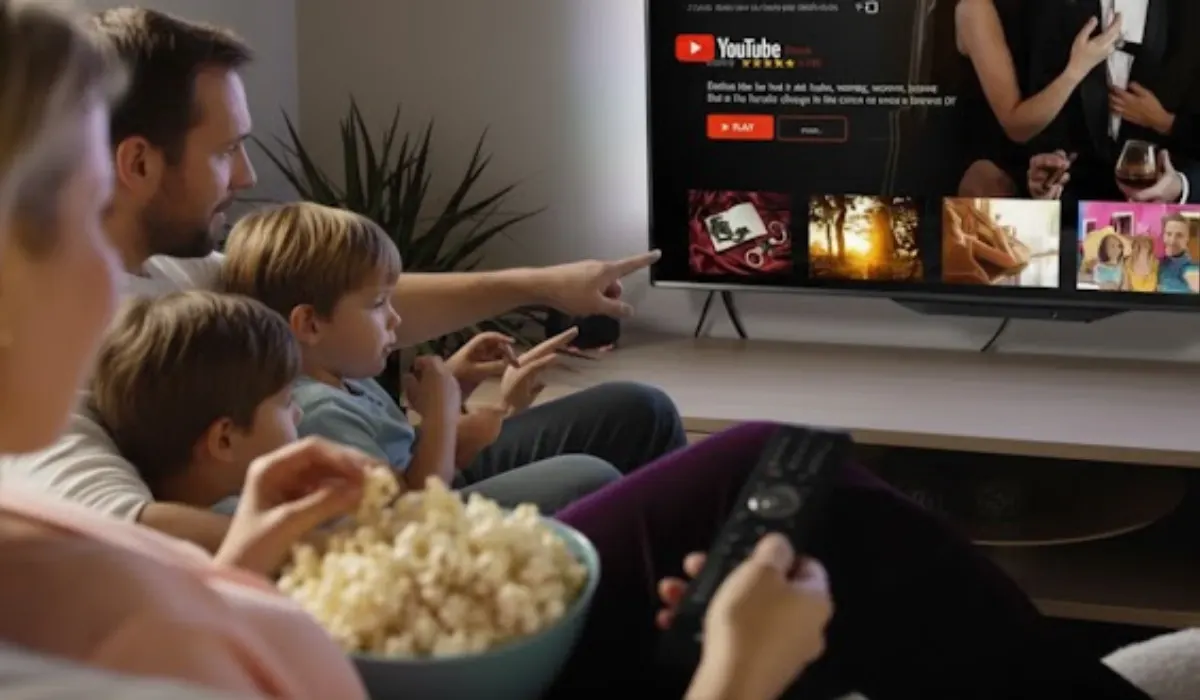Streaming Expenses Rise Amid Economic Pressures
Streaming services have transformed entertainment, but their costs add up quickly. In 2025, the average U.S. household subscribes to four video-on-demand platforms, excluding music or gaming options. Total annual spending on these services exceeds $1,200 per family, according to Deloitte's digital media trends report.
Inflation, now at 2.9% as of August 2025, exacerbates this burden. Unemployment hovers at 4.3%, and the Federal Reserve's September rate cut to 4.00%-4.25% signals ongoing economic caution. For many, these factors squeeze discretionary budgets, including entertainment.
Credit card issuers recognize this shift. Programs like Amex Offers deliver targeted savings, turning routine payments into opportunities for relief. Such perks not only ease immediate costs but also encourage smarter financial habits during uncertain times.
American Express Offers: A Proven Savings Mechanism
American Express launched its Offers program in 2010 as a way to enhance cardholder value. Initially focused on retail discounts, it has evolved into a robust platform generating $15 billion in global spend in 2024 alone, with $13 billion in the U.S.
The program partners with merchants across sectors, including entertainment. Cardholders access personalized deals via the Amex app or website, where enrollment triggers automatic credits upon qualifying purchases. This setup requires no coupons or manual claims, streamlining the process.
Eligibility varies by card and account history. Consumer, business, and even some prepaid Amex cards qualify, though offers rotate frequently. In 2025, entertainment-focused promotions have surged, reflecting streaming's dominance in household spending.
Amex's approach aligns with broader industry trends. Competitors like Chase Offers and Bank of America Deals follow suit, but Amex's scale—serving over 100 million cardholders—sets it apart. These initiatives underscore how issuers leverage data to tailor benefits, fostering loyalty amid competitive rewards landscapes.
Spotlight on the YouTube TV Amex Offer
The current YouTube TV promotion stands out for its generosity. Eligible Amex cardholders receive a $20 statement credit for each subscription payment of $49.99 or more made directly through tv.youtube.com or the YouTube TV app.
This repeats up to three times, capping savings at $60. The offer expires March 20, 2026, providing ample window for multiple billing cycles. With YouTube TV's base plan now at $82.99 monthly following a December 2024 hike, each qualifying payment easily meets the threshold.
Activation is straightforward. Log into your Amex account, navigate to the Offers section, and select "Add to Card." Once enrolled, credits post within days of the charge posting. This automation minimizes effort, making it ideal for recurring expenses.
Not all cards receive the deal—it's targeted based on spending patterns and issuer algorithms. Checking multiple accounts, including business variants, often uncovers eligibility across portfolios.
Step-by-Step Activation Guide
Begin by opening the American Express mobile app or visiting americanexpress.com. Under the "Membership" tab, locate "Amex Offers." Scroll through personalized listings to find the YouTube TV entry.
If visible, tap to review terms, then enroll. Confirmation appears immediately, and the offer links to your chosen card. For web users, the process mirrors this via desktop login.
Next, ensure your YouTube TV billing aligns. Update payment methods in the app or site to your enrolled Amex card. Avoid third-party processors like Apple or Roku, as they disqualify transactions.
Monitor statements post-enrollment. Qualifying charges code as "YouTube TV" or similar, triggering credits typically within 2-3 business days. Amex emails confirmations, aiding tracking.
For troubleshooting, contact Amex support at 1-800-528-4800. Representatives verify enrollment and resolve coding issues promptly. This proactive step ensures maximum utilization before the March deadline.
YouTube TV: Evolution from Launch to 2025 Leader
YouTube TV debuted in April 2017 as Google's entry into live streaming. Priced at $35 monthly for 40 channels in select markets, it targeted cord-cutters seeking cable alternatives without contracts.
Early adopters praised unlimited cloud DVR and multi-device support. By mid-2017, nationwide expansion followed, alongside integrations like NBA League Pass. These features positioned it as a versatile option beyond on-demand video.
Pricing adjustments began in 2018. A March hike to $40 added Turner networks, including CNN and TBS. Further increases—to $50 in 2019 with Discovery channels, $65 in 2020 via ViacomCBS deals—reflected content expansions.
The service now boasts over 100 channels, spanning ABC, ESPN, and local affiliates. Add-ons like 4K Plus ($9.99 extra) enable offline downloads and unlimited home streams. Sports enhancements, such as multiview for simultaneous games, cater to fans.
As of October 2025, YouTube TV claims 8 million subscribers, per industry estimates. Its growth mirrors streaming's ascent, with live TV comprising 30% of U.S. video consumption. Yet, recent hikes underscore challenges from licensing fees, up 20% annually industry-wide.
Decoding YouTube TV's Current Pricing Structure
The base plan costs $82.99 monthly or $995.88 yearly, a $10 jump from December 2024's $72.99. This affects new sign-ups immediately and existing users from January 13, 2025.
Included perks justify the premium. Unlimited DVR stores recordings for nine months, far exceeding competitors' limits. Three simultaneous streams support family viewing, while keyless entry simplifies guest access.
Add-ons expand utility. Sports Plus ($10.99) bundles NFL RedZone and MLB.TV. Entertainment options like Max or Starz run $15.99-$20.99. Bundles, such as the Disney package with Hulu and ESPN+, save 10-15% versus standalone rates.
Taxes and fees add 5-10% regionally, varying by location. Annual prepayment locks in rates, avoiding mid-year hikes. Free trials—up to 14 days—allow testing without commitment.
Comparatively, Hulu + Live TV matches at $82.99 but includes ad-supported Disney+ and ESPN+. Sling TV starts lower at $40, though with fewer channels. YouTube TV's breadth suits comprehensive needs, per Nielsen data showing 25% higher engagement for live sports viewers.
Historical Price Trajectory and Industry Context
YouTube TV's pricing has nearly tripled since inception. From $35 in 2017, increments tied to expansions: $40 (2018, Turner add), $50 (2019, Discovery), $65 (2020, Viacom), $73 (2023, NFL Sunday Ticket).
The 2024-2025 $10 rise cites "rising content costs and service investments." Licensing battles, like the 2020 Sinclair blackout affecting 3 million users, highlight volatility. Google invests $2 billion yearly in rights, per filings.
Broader trends amplify pressures. Streaming revenues hit $50 billion in 2024, but profitability lags—Netflix alone turned positive in 2023. Ad-supported tiers, now 40% of sign-ups, offset losses, yet live TV demands premium fees.
Regulators scrutinize hikes. The National Advertising Review Board in 2023 challenged YouTube's "$600 less than cable" claim post-$73 adjustment, citing misleading comparisons to bundled services averaging $78.58 monthly.
For consumers, these shifts demand vigilance. Tools like subscription trackers reveal overlaps, with 42% of users holding redundant plans, per a 2025 Hub Entertainment report.
Maximizing the Amex Offer with YouTube TV Billing
Timing enhances value. Align enrollments with billing dates to capture three credits swiftly. At $82.99, effective cost drops to $62.99 per cycle initially, then $42.99 after full utilization—a 48% reduction.
Prepay annually if rates concern you, though credits apply only to qualifying chunks. Split payments across cards if multiple offers appear, but track limits to avoid dilution.
Combine with YouTube TV trials for newcomers. A 14-day free period tests compatibility pre-commitment. Post-trial, the first charge triggers the initial $20 back.
Watch for coding nuances. Direct app payments qualify; browser extensions or VPNs risk flagging. Amex's merchant identification relies on descriptors, ensuring transparency.
Long-term, this offsets hikes. Over six months, savings equate to a free add-on, preserving budget for other essentials amid 4.3% unemployment.
Stacking Amex Savings with Competing Bank Promotions
Amex's triple-credit structure outpaces rivals. Chase Offers occasionally feature $20 back on YouTube TV, limited to once through December 2025. Activation mirrors Amex, via the Chase app under "Offers."
Bank of America Deals provide similar single-use $20 credits for streaming, valid until year-end. Preferred Rewards members boost to 25-75% extra cash back on categories like online shopping, including subscriptions.
Citi and Capital One lag in specifics but offer 3-5% rotating quarterly cash back on entertainment. For instance, Citi Custom Cash yields 5% on top streaming spends up to $500 monthly.
Cross-issuer stacking requires multiple cards. Route YouTube TV to Amex for the offer, then Netflix to Chase for 3x points. This diversification mirrors portfolio strategies, mitigating reliance on one program.
Industry data shows 60% of cardholders use multiple issuers for perks, per a 2025 J.D. Power survey. Such layering can yield 10-15% effective rebates on entertainment annually.
Broader Credit Card Rewards for Streaming Enthusiasts
Beyond targeted deals, ongoing rewards amplify value. The Blue Cash Preferred Card from Amex earns 6% cash back on U.S. streaming up to $6,000 yearly, post-$95 fee (waived first year).
Chase Sapphire Preferred nets 3x points on select streaming, redeemable at 1.25 cents each via Chase Travel—effectively 3.75% return. No-fee Blue Cash Everyday offers 3% on similar spends.
Bank of America's Customized Cash Rewards hits 6% in chosen categories like online shopping (including streaming) for the first year, then 3%, up to $2,500 quarterly.
U.S. Bank Altitude Go provides 4x on dining and 2x on streaming with no fee, ideal for balanced budgets. These structures reward habitual use, turning passive subscriptions into active earners.
Welcome bonuses further sweeten entry. Amex Gold's 60,000 points after $6,000 spend covers months of streaming. Selection depends on spend profiles—travelers favor Chase, cash-back seekers Amex.
Navigating Streaming Budgets in a High-Cost Era
Economic headwinds demand strategic allocation. With Fed cuts anticipated, borrowing costs ease, but inflation lingers on essentials. Entertainment, at 5% of budgets, offers trim points without sacrifice.
Audit subscriptions quarterly. Tools like Rocket Money identify $200+ annual waste across platforms. Prioritize bundles—YouTube TV's Disney integration saves $10 monthly.
Credit utilization factors in. Keep balances below 30% to preserve scores, enabling better offers. FICO data links high utilization to 50-point drops, hindering approvals.
For families, shared plans multiply value. YouTube TV's household limits support six profiles, spreading $82.99 across users. Pair with Amex for collective savings.
Experts recommend 50/30/20 budgeting—50% needs, 30% wants, 20% savings. Streaming fits "wants," capped at 5-7% to balance fiscal health.
Alternative Strategies for Entertainment Savings
Promotions extend beyond cards. Verizon bundles save $10 monthly on YouTube TV for fiber users through 2025. Frontier offers $15 off for TV package holders.
Ad-supported tiers cut costs 30-50%. YouTube TV's base includes limited ads; opt for premium add-ons selectively. Free trials stack—rotate services monthly for zero-cost access.
Loyalty programs add layers. Google One members get 10% back on select purchases, while T-Mobile perks include free Netflix. These ecosystem ties enhance overall yields.
Offline options persist. Libraries offer Hoopla for ad-free streaming, and antenna setups capture locals gratis. Hybrid approaches blend paid and free, optimizing 2025 budgets.
Long-Term Financial Planning Around Perks
Amex Offers exemplify integrated planning. Track via apps like Mint, categorizing credits as "rebates" for tax clarity. Annual reviews reveal patterns, refining card rotations.
Diversify rewards currencies. Amex Membership Rewards transfer to airlines at 1:1, valuing points at 2 cents each for travel redemptions. This elevates streaming's indirect worth.
Consult advisors for personalization. CFP professionals stress perks within holistic goals, avoiding debt traps. With rates at 4%, low-interest financing aids if needed.
As markets fluctuate, these tools build resilience. Savings compound—$60 today funds emergencies tomorrow, aligning entertainment with enduring security.
Conclusion: Seize Savings in Uncertain Times
The Amex YouTube TV offer delivers immediate, hassle-free value amid rising costs. By activating promptly, cardholders transform a routine bill into a strategic win.
Broader rewards ecosystems offer sustained benefits, rewarding informed choices. In October 2025's landscape, such perks underscore finance's role in everyday joys.
Monitor accounts regularly—opportunities evolve. With economic signals mixed, proactive steps like these fortify portfolios, one credit at a time.




